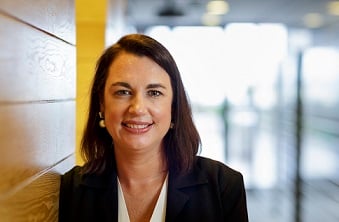HR Director Anjanette Murfet talks engaging and retaining talent, and working in Ghana for a year

What is your current role and what brought you into it?
I’m the Human Resources Director for Coca–Cola South Pacific and I’ve been here for 18 months. I was introduced to my boss, Roberto Mercade, Business Unit President of Coca Cola South Pacific, by Alison Watkins, Group Managing Director at Coca-Cola Amatil, our bottling partner. I had worked with Alison at GrainCorp and I saw going to work for one of the world’s most recognisable and valuable brands as a great opportunity.
The Coca-Cola brand has been around for more than 130 years since our humble beginnings in a pharmacy in Atlanta, Georgia. Our beginnings in Australia more than 80 years ago are no less humble, from a warehouse in Woolloomooloo and a handful of trucks delivering in the Sydney area. Today, the Coca-Cola Company serves more than 1.9 billion drinks a day around the world, and 94% of all people on the planet recognise our red and while logo.
We’re obviously doing some amazing things with our brands, but I also learnt that we’re doing a lot of work on our products. This includes addressing people’s concerns around sugar by changing recipes and our packaging.
While we celebrate our heritage and flagship product in our company name, we have more than 500 brands around the planet and we are truly a total beverage company producing what we like to call, Beverages for Life. It was that commitment to doing the right thing that sealed the deal for me.
What are some of your current HR challenges?
We are focused on continuing to develop a people strategy that enables our business to grow in a developed market and where consumer tastes are changing. Sustained growth in a mature business is really hard work. This means our business and our people need to be agile and focused on the work that matters most to execute our business strategy. To help achieve this, we have just launched our new Performance Management Practice – Performance Enablement.
With Performance Enablement we have eliminated the annual and mid- year performance conversations, we have eliminated end of year ratings and our people managers are no longer required to spend time on lengthy forms and system administration. Instead, our people will have much more frequent and personal contact with their manager – there is a lot more feedback in the moment and at monthly catch ups, knowing where you stand at all times and no end of year surprises.
There is also increased clarity on why the work you are doing matters and how it impacts the business. There is better time management thanks to knowing how to prioritise and deprioritise in line with the business strategy.
What is the favourite part of your job?
Working on important initiatives that can directly impact on the success of an organisation and ensuring that our people strategy supports the overall business strategy and drives results for the business. I know it’s something of a cliché, but in a company focussed on marketing and services our people really are our greatest asset. It’s a hugely competitive market for the kinds of skills we use, so I also like solving problems and coming up with innovative solutions to ensure that we attract, retain and engage the best talent.
What attracted you to a career in HR?
HR as a career was something that I fell into. I was a lawyer working in a consultancy firm that provided HR/ IR and advocacy to clients. One of my clients asked to second me into a HR Manager role and I realised that my legal background provided great grounding for a career in HR. I really liked that HR allows you to build great talent, reward and recognise people and drive performance through engagement and world class best practice. I found it more rewarding than the law and I haven’t looked back.
What’s one piece of HR related advice you would offer?
Really take time to understand the strategy and the commercial drivers of the business and ensure that your HR Strategy is in service to that. Take the time to understand the numbers, use data to help you drive your strategy and contribute to the broader commercial agenda.
What hobbies and interests do you have outside of HR?
I have a 13-year-old son who is a fairly competitive rower, so in summer there are a lot of early morning starts for training and regattas. That also burns a lot of energy, so I spend a lot of time cooking to feed him to keep the fuel up. Apart from that, I love reading and listen to music. I try to run – try being the emphasis.
Moreover, in 2009, I was appointed to a role working on a large merger and acquisition in Ghana in West Africa for one year. It was a fantastic opportunity for myself and my family to work and live in a third world country.
Please complete this sentence: If you weren’t working in HR, you would be… working as a lawyer





